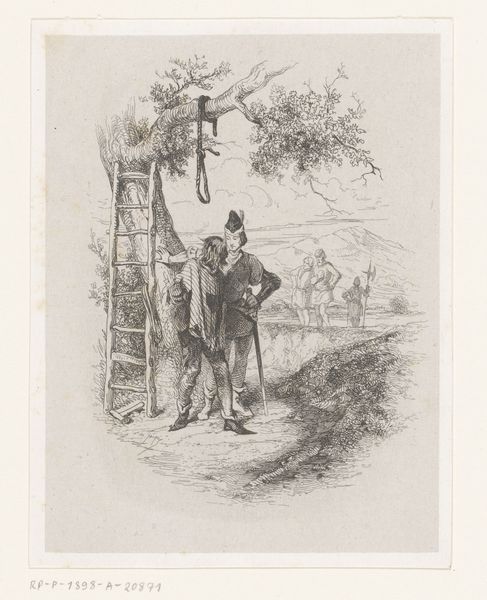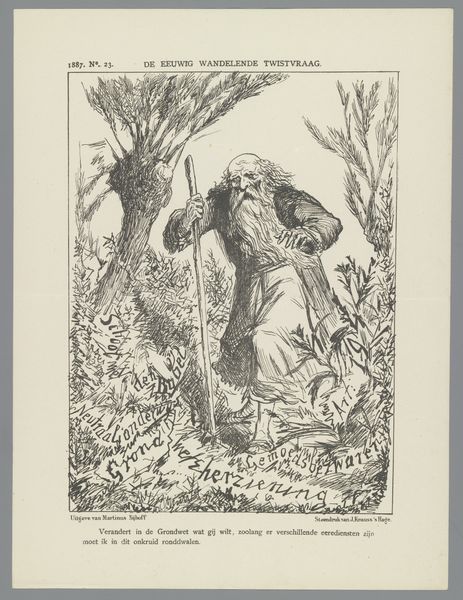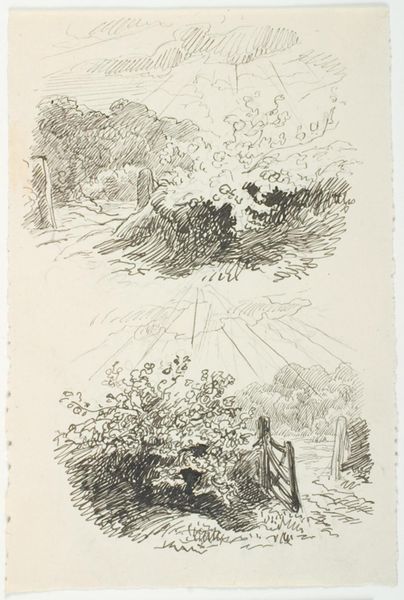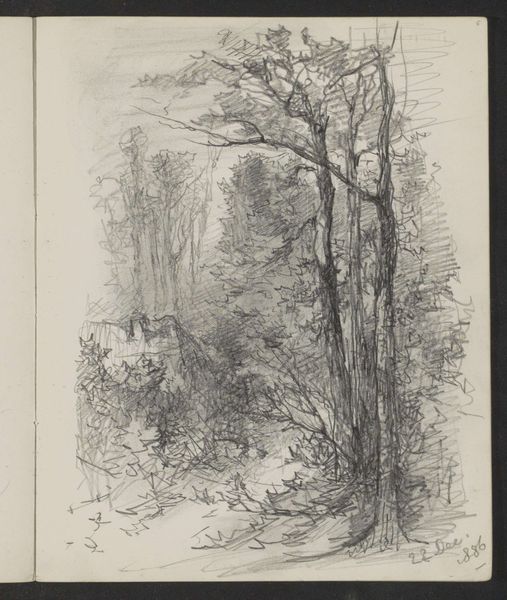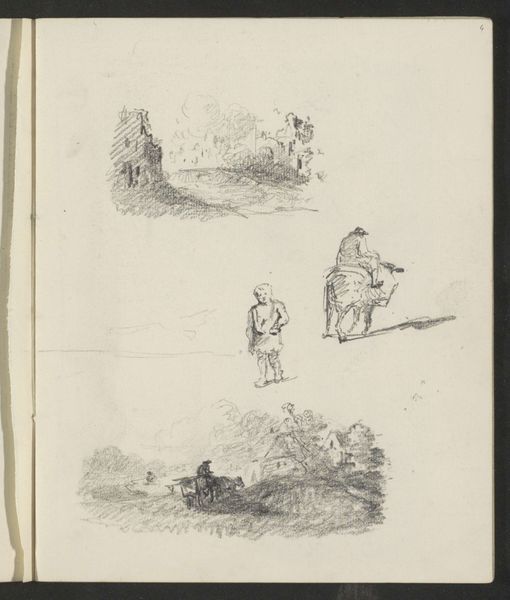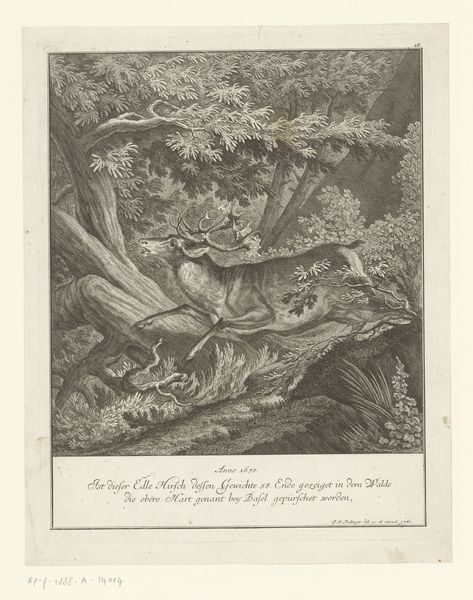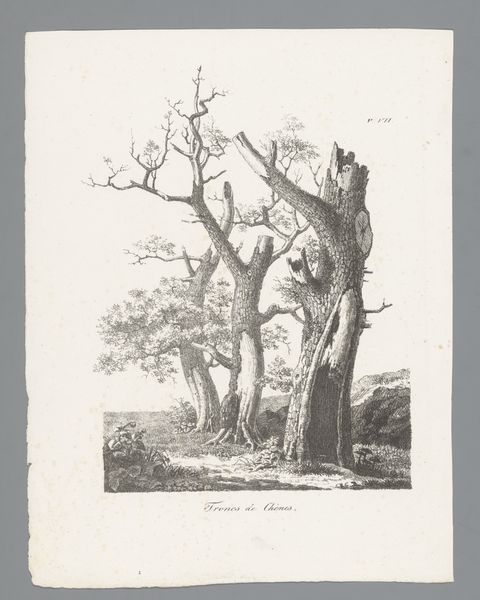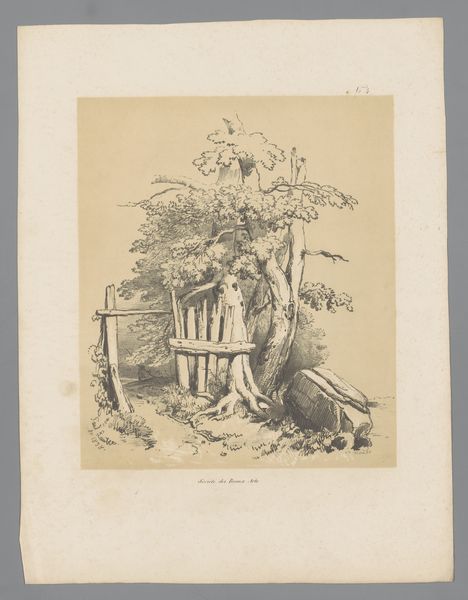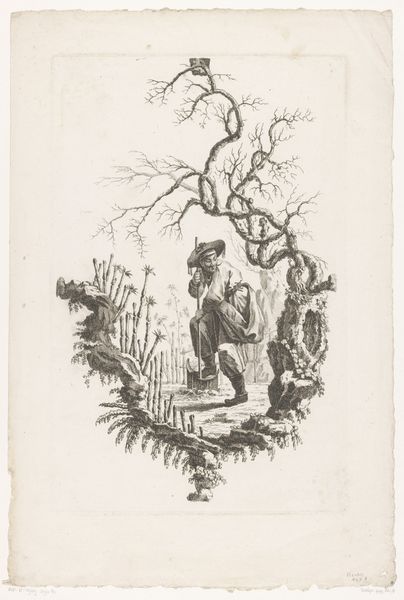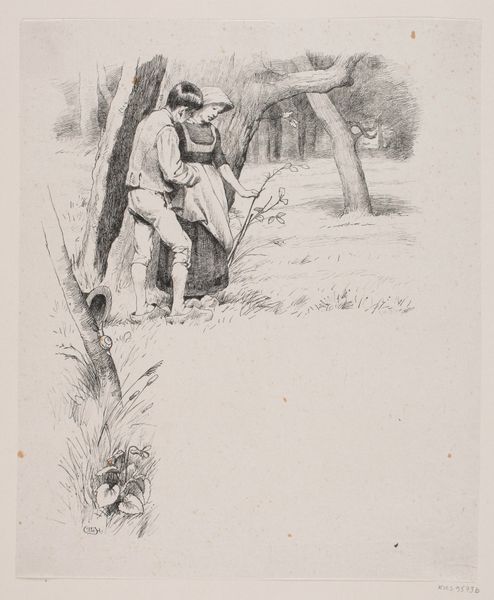
drawing, print, paper, ink, pen
#
tree
#
drawing
# print
#
pen illustration
#
pen sketch
#
caricature
#
old engraving style
#
landscape
#
paper
#
personal sketchbook
#
ink
#
forest
#
ink drawing experimentation
#
pen-ink sketch
#
line
#
pen work
#
sketchbook drawing
#
pen
#
storyboard and sketchbook work
#
sketchbook art
Dimensions: height 275 mm, width 215 mm
Copyright: Rijks Museum: Open Domain
Curator: This intricately detailed pen and ink print is titled "Spotprent op de storm in het Haagse Bos, 1869" which translates to something like "Cartoon of the storm in The Hague Forest." It comes to us from Johan Michaël Schmidt Crans and depicts a somewhat ravaged landscape. What are your first impressions? Editor: The scene strikes me as… sardonic. Despite the supposed devastation, the overall impression isn't tragic. There's almost a sense of dark humor, a deliberate exaggeration. The starkness of the black ink amplifies this mood, doesn't it? Curator: Indeed. Look at the trees themselves; each seems to bear labels or caricatures representing societal issues of the time. See the figures to the left labeled "Schadelyke Vestingen", Dutch for "Harmful Fortifications." It points to political debates around national defense and the costs associated. Editor: And I see a 'Patent Wet' tree -- Patent Law -- right in the middle. What does the fallen trunk say? "Ondagszame Zeep" Unruly Soap. Was there a crisis of cleanliness afoot in the Netherlands? This allegorical landscape tells of quite turbulent times. Curator: You’ve hit upon it exactly. Crans uses the imagery of a storm-ravaged forest as a metaphor. A societal clean-up might do more good than harm – perhaps implying it’s better to tear down and start anew. These symbols tap into widespread anxiety about modernization. The cultural memory is of rapid shifts causing societal instability. Editor: It’s quite daring to directly label social and political constructs on such organic forms. He cleverly juxtaposes the natural world with man-made concerns, almost anthropomorphizing the issues to reveal them with humor. Did this artist create other socio-political works? Curator: Absolutely. Crans often critiqued establishment using caricature, particularly when those structures felt brittle or misaligned with evolving values. It's a potent visual statement rooted in a moment of political and social unease. Editor: Thank you. This print reminds us of the potency that charged imagery can possess and also to inspect those forces constantly. Curator: A perfect conclusion, because it is clear that such anxieties certainly continue resonating to this day.
Comments
No comments
Be the first to comment and join the conversation on the ultimate creative platform.
